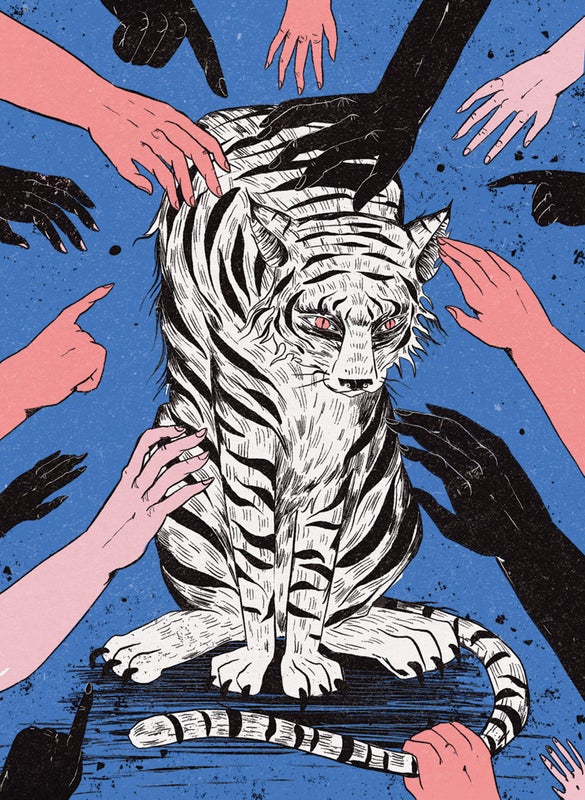The white tiger is produced by a genetic fluke that occurs when two orange tigers with rare recessive forms of a gene, called alleles, happen to breed. White tigers are so rare in the wild that they have been seen only a few times in recorded history, with the last known wild white tiger killed in 1958. Their rarity could be because the recessive allele is the result of a one-time mutation or because white tigers lack adequate camouflage, reducing their ability to stalk prey or avoid other predators.
But they are not scarce in captivity. Because they are so rare, exploitative roadside menagerie operators, exhibitors and collectors seek to maintain white tiger populations for the sake of generating profit. To continue producing white tigers, captive tigers with this rare allele expression are intensively inbred over multiple generations. In other words, parents are bred with their offspring, siblings are bred with one another, and other closely related animals are bred with one another as well. In fact, all the white tigers in captivity in the U.S. are believed to be descendants of a single male Bengal tiger named Mohan, bred to an orange tiger and then to his daughter from that breeding.
The practice of continual inbreeding continues to this day—not by zoos accredited by the American Association of Zoos and Aquariums (AZA), which halted it in its member institutions a decade ago, but primarily by largely unregulated commercial enterprises that use white tigers as a draw for paying visitors. More than 60 years since Mohan and roughly 11 tiger generations later, white tigers are suffering the consequences of extensive inbreeding, which has produced tragic results. Neonatal mortality among white tiger cubs can be high and increases with the degree of inbreeding: one study showed that more than 80 percent of intensively inbred cubs died shortly after birth. Forced inbreeding of captive white tigers can also lead to reduced litter size and shorter average life spans, as well as a host of health problems such as impaired vision, cardiac defects, serious spinal and facial deformities, and compromised immune systems. In its 2011 white paper prohibiting this kind of breeding, the AZA cites the “abnormal, debilitating, and at times lethal external and internal conditions and characteristics” that result.
Pseudo sanctuaries—exploitative, unqualified wildlife exhibits masquerading as legitimate rescue sanctuaries—continue to breed and abuse white tigers under the guise of conservation. This is a far cry from true conservation. Captive-bred white tigers serve absolutely no conservation or educational purpose. Their lack of genetic diversity, high degree of inbreeding and resultant physical afflictions remove them and their offspring from consideration for any hypothetical release programs. These animals have no place in any conservation program, which explains why no legitimate conservation organization today endorses the breeding of white tigers.
The only reason white tigers are bred today is because they are incredibly lucrative for breeders and exhibitors who charge visitors at entertainment venues to play with cubs, using them as photo props. Once cubs age out of this vicious pay-for-play system, they may be sold to the general public as “pets,” warehoused, intensively bred to create the next generation of money-making white tiger cubs or otherwise subjected to abusive treatment. When the unsuspecting public buys into an exhibitor’s false conservation claims and pays to see or handle a white tiger, they are unknowingly perpetuating irresponsible inbreeding, poor population management and exploitative practices.
Federal legislation has been introduced in the U.S. Senate, including the Big Cat Public Safety Act (H.R. 263/S. 1210), to strike a blow at the key financial driver behind the incessant and highly unregulated breeding of big cats and the resultant proliferation and “breeding to death” of white tigers.
Pop culture has romanticized the keeping and breeding of tigers and other big cats in a terribly harmful way. Now that our collective eyes are open to what we need to do to protect these magnificent animals, we must mitigate their greatest threat: us.


